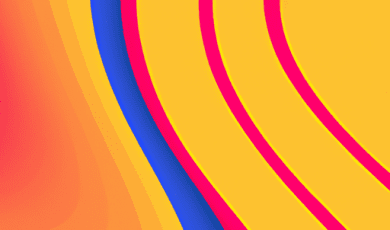
Paddleboarding has exploded in popularity, and with it comes a new wave of technology that can dramatically speed up how fast you progress on the water. From learning the basics of balance to refining advanced turning techniques and race starts, modern digital assistants are transforming the way people train. Instead of relying only on occasional lessons or trial-and-error, you can now use smart, data-driven support to build skills consistently and confidently—no matter your starting point.
Among the most powerful options available today are AI automation tools that bring together movement analysis, personalized coaching, and performance tracking into one streamlined experience. These platforms interpret your technique the way a seasoned instructor would, but with the added benefit of real-time feedback and long-term data insights. The result: more efficient practice sessions, fewer bad habits, and safer progression from beginner to advanced levels.
1. Smart Video Analysis for Technique Breakdown
One of the biggest challenges in paddleboarding is understanding what your body is actually doing versus what you think it’s doing. Smart video analysis powered by advanced algorithms bridges that gap. You record short clips of your paddling, upload them, and receive a detailed breakdown of your stance, stroke, and posture.
- Posture correction: These systems can highlight hunched shoulders, bent wrists, or a misaligned spine that might be draining your power or risking injury.
- Stroke efficiency: By analyzing your paddle entry, catch, power phase, and exit, they identify whether you’re losing speed through a sloppy stroke or poor blade angle.
- Side-by-side comparisons: You can compare your form to demo clips from expert paddlers, so you see exactly what needs adjusting.
This kind of visual feedback makes learning much faster than relying solely on “feel,” especially when you’re developing new habits or correcting long-standing mistakes.
2. Personalized Training Plans Based on Your Skill Level
Generic tutorials are fine for day one, but progress slows if you’re not following a structured plan. Intelligent training platforms can assess your current ability, goals, and available training time, then generate tailored programs that adapt as you improve.
- Skill assessments: Short quizzes and movement tests determine whether you’re a true beginner, an intermediate paddler refining turns, or an advanced rider chasing speed.
- Adaptive difficulty: As your balance, strength, and technique scores rise, the system automatically increases the complexity of drills and sessions.
- Goal-specific tracks: Whether you want to tour longer distances, race, ride waves, or simply stand with confidence, you get focused progressions instead of random exercises.
This removes guesswork from your practice schedule and ensures that each session builds logically on the last.
3. Real-Time Feedback with Wearable Sensors
Wearable devices—watches, chest straps, motion sensors—become far more powerful when combined with intelligent analysis. Mounted on your wrist, paddle, or board, they collect rich data while you’re on the water and turn it into practical coaching cues.
- Stroke rate and cadence: You’ll see whether you’re paddling too fast with weak strokes or too slowly with wasted effort.
- Balance metrics: Advanced motion data exposes how much you’re rocking side-to-side or shifting weight, helping you calm your stance and reduce falls.
- Heart rate and intensity zones: Endurance training becomes more efficient when your sessions are guided by effort level instead of guesswork.
Some systems can even deliver audio cues through earbuds while you paddle, gently reminding you to adjust your stance, slow your stroke, or push a little harder during intervals.
4. Virtual Coaching Sessions and Guided Drills
Not everyone has easy access to a professional coach, and even if you do, lessons can be expensive. Virtual coaching sessions can replicate much of that guidance at a fraction of the cost. Instead of generic videos, you get sessions that respond to your specific weaknesses and strengths.
- Customized drill libraries: Depending on the issues found in your technique, you’ll receive targeted drills—like step-back turns, pivot practice, or low stance stability exercises.
- Session previews and warm-ups: Guided routines walk you through preparation, from joint mobility to paddle-specific warm-ups.
- Progressive challenges: Once you’ve mastered a drill, the platform increases difficulty with choppy-water variations, narrow stances, or speed elements.
This style of guided training keeps sessions fresh, structured, and aligned with your evolving capabilities.
5. Performance Dashboards to Track Progress Over Time
It’s motivating to see visible progress, especially in a sport where improvements can feel subtle. Data dashboards consolidate all your training metrics into clear visuals that show how far you’ve come.
- Session summaries: Track time on water, distance covered, average speed, and stroke rate for each outing.
- Trend analysis: Identify long-term improvements in balance, endurance, and efficiency rather than focusing on any one “off” day.
- Goal tracking: Set targets like “paddle 10 km per week” or “reduce falls by 50%” and watch your progress update after every session.
These insights help you understand which training strategies actually work and when it’s time to tweak your plan.
6. Safety Support and Conditions Monitoring
As you go farther from shore and into changing conditions, safety becomes as important as skill. Intelligent platforms increasingly integrate environmental data to keep your time on the water secure and enjoyable.
- Weather and wind alerts: Receive warnings when gusts, storms, or rapidly changing conditions could make paddling dangerous.
- Tide and current insights: Plan routes that work with the water rather than against it, conserving energy and reducing risk.
- Skill-matched route suggestions: Get recommendations for distance and difficulty that fit your current level, so you don’t accidentally overreach.
With these safeguards, it becomes easier to push your limits responsibly while still embracing adventure.
7. Mindset, Recovery, and Cross-Training Support
Mastery isn’t just physical. Focus, confidence, and recovery play a huge role in how effectively you improve. Modern platforms are increasingly incorporating these elements into their systems.
- Mental rehearsal: Guided visualizations and focus exercises help you stay calm in choppy water or crowded race starts.
- Off-water workouts: Tailored strength, mobility, and balance sessions complement your time on the board, addressing weaknesses like core stability or hip flexibility.
- Recovery guidance: Stretching routines and rest recommendations prevent burnout and keep you paddling consistently.
By treating you as a whole athlete rather than just a collection of metrics, these platforms support sustainable, long-term growth.
Conclusion: Turning Data into Real Paddling Confidence
Mastering paddleboarding used to mean years of trial-and-error, scattered tips, and occasional lessons. Now, you can skillfully accelerate that journey with intelligent analysis, personalized plans, real-time feedback, and structured progression. Whether you’re nervous about standing up for the first time or fine-tuning your technique for races and long-distance tours, modern digital platforms can guide every step.
The best way to benefit is to treat these systems as always-available training partners: record your sessions, follow the recommended drills, and pay attention to the patterns shown in your data. Over time, those small, targeted adjustments compound into major gains in balance, power, and confidence on the board. With the right tech support, the path from shaky beginner to skilled paddler becomes clearer, safer, and a lot more fun.







